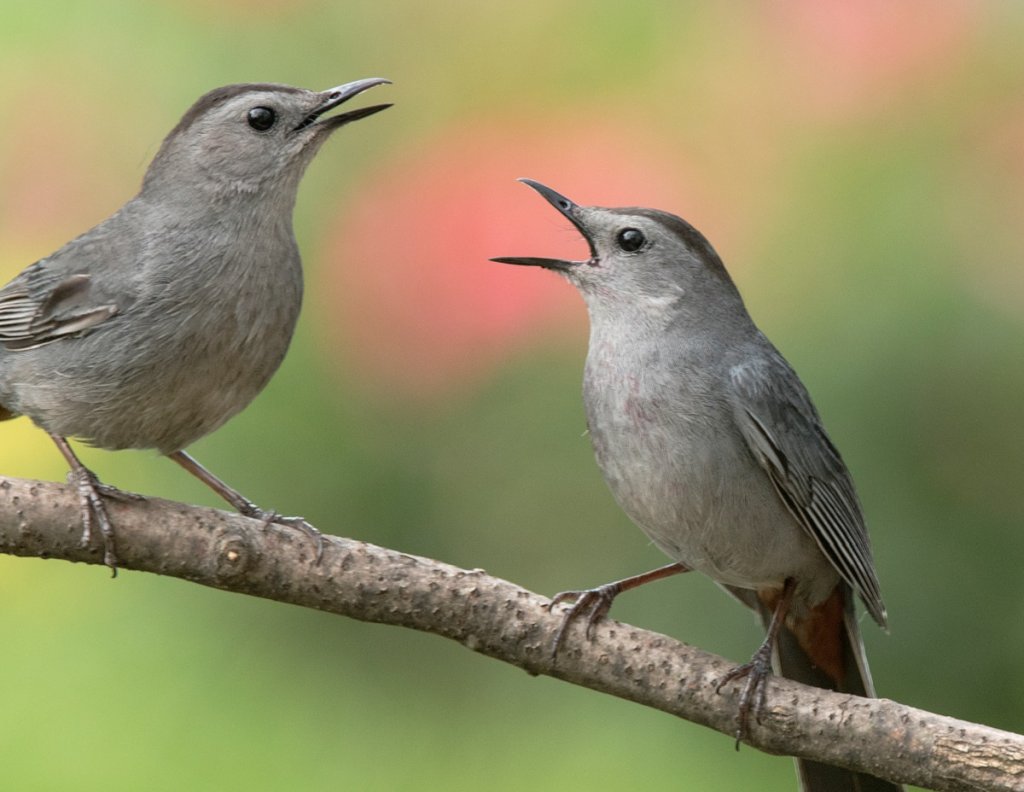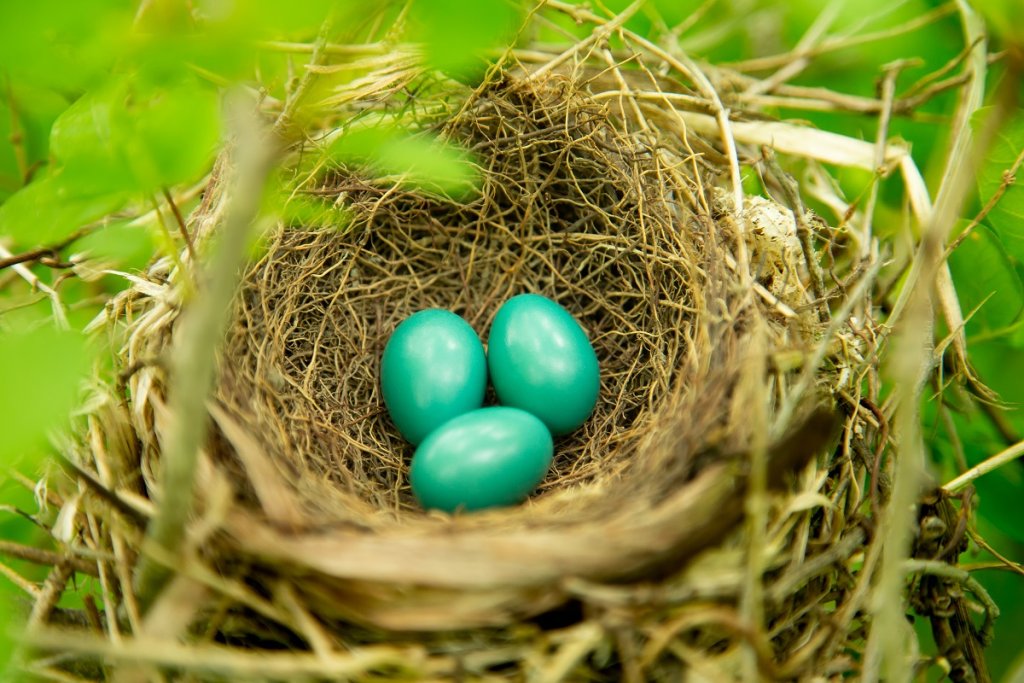After returning from their winter migration, catbirds mate each spring after a courting ritual. The female lays up to six turquoise eggs in a nest she built. After 11 days, the nesting hatch, where spend another 12 days in the nest before leaving as fledglings. where they are often killed by cats.
Catbirds (Dumetella carolinensis) are medium-sized members of the Mimidae family, which includes Mockingbirds and Thrashers. They are often found in the East and the Midwest United States. Able to mimic the sound of other animals, this gray bird makes sounds that resemble a cat when in danger, hence its name.
They are sometimes called slate-colored mockingbirds or mimic thrushes.
Breeding Season and Mating Rituals
Males and females will come together at the start of the mating season (April to early August) after they return from wintering in Mexico and Central America. The male will conduct a courtship display where he’ll fluff his feathers to become attractive. Once they pair up, the nesting begins. Gray catbirds are monogamous and may even mate for life.
Their nesting season can reach late June, depending on where they’re nesting. The pair will produce two broods a season.
Adult males are also known to chase off other males from their territory. These birds will destroy other nests and pierce other eggs around as well.

Gray Catbird Nest and Nesting Habits
The female will be responsible for nest building. Males will do very little work but stand guard as the female does the construction.
The birds build their nest on the horizontal branches of dense shrubs, thickets, briars, vines, or small trees. Typically, they build them 4 feet off the ground but may build on the ground or treetops as high as 60 feet.
Their nest is cup-shaped and lined with rootlets, pine needles, and horsehair. It’s usually located in shrubs or small trees, up to 10 feet above the ground. The primary materials they use include leaves, twigs, and grass.
Catbirds won’t reuse the nests even for the second brood. However, they faithfully return to the same area every year if they’re successful in raising the babies. If not, they’ll go elsewhere.

What Color Are Catbird Eggs?
Even though catbirds are gray, their eggs are very colorful — turquoise green. Eggs will sometimes have tiny red spots. The egg length is around 0.9-1.0 inches (2.2-2.6 cm) and width about 0.5-0.6 inches (1.2-1.6 cm).
The usual clutch size is 1 to 6 eggs. The eggs are incubated by a female only — the male is only there as a backup. The incubation period lasts from 12 to 14 days.
This avian species is often the target of the lazy Brown-headed Cowbird (a member of the blackbird family who will attempt to lay eggs in their nest. Catbirds will quickly react and toss the cowbird eggs out.
The mother will look at other eggs to see how they compare in appearance to her bright blue egg. If it is white and spotted like a cowbird’s egg. she will pierce the egg with her beak, and out it goes. However, cowbirds have been known to evict the first catbird egg and trick the mother into thinking that the eggs she leaves are what eggs are supposed to be like. The female catbird may pitch out her own eggs as she has “learned” them to be white and will incubate the wrong eggs.
Do Catbirds Abandon Their Eggs?
Catbirds will only leave their eggs when they’re looking for food. These are short periods when the male stays on the edge of the nest to observe. Still, the father won’t sit on the eggs; he’s just there to keep track of events.

Nestlings
The babies will hatch on about day 11. The youngsters will hatch naked with their eyes closed. They’ll be completely helpless and partially covered with dark brown or gray. Both adults will continue to feed them for up to 12 days.
The babies love to feast on cherries, berries such as raspberries, blackberries, and blueberries, and insects such as ants, caterpillars, moths, grasshoppers, and beetles.
The babies will then leave the nest.

Fledglings
After being in the nest for about 12 days, it’s time for juveniles to leave. Unfortunately, studies in Maryland showed that about 80% of catbird fledglings in suburban areas get killed by predators before they hit adulthood. Most of these deaths are connected to domestic cats.
Baby birds are inexperienced flyers. Cats are let outside in their yards to study the habits of the little fledglings. At first, the babies stretch loudly for food. As they aren’t attuned to predators, cats grab them and bite off their heads. Crows and rats also vie for tasty gray catbird lunches.
Researchers found that the position of the nest leads to the quick abduction of the babies by cats and other animals. According to Peter Marra from the Smithsonian research team, “The habitats looked suitable for breeding birds with lots of shrubs for nesting and areas for feeding, but the presence of cats, a relatively recent phenomenon, isn’t a cue birds use when deciding where to nest.”
How Long Do Catbirds Live?
If fledglings survive leaving the nest and successfully avoid potential predators, they can live 10 years. One catbird was successfully banded as a fledgling, was found 18 years later, and was seen around for a few more seasons.
Given the infant mortality of catbirds, the average lifespan is only 2.5 years.

